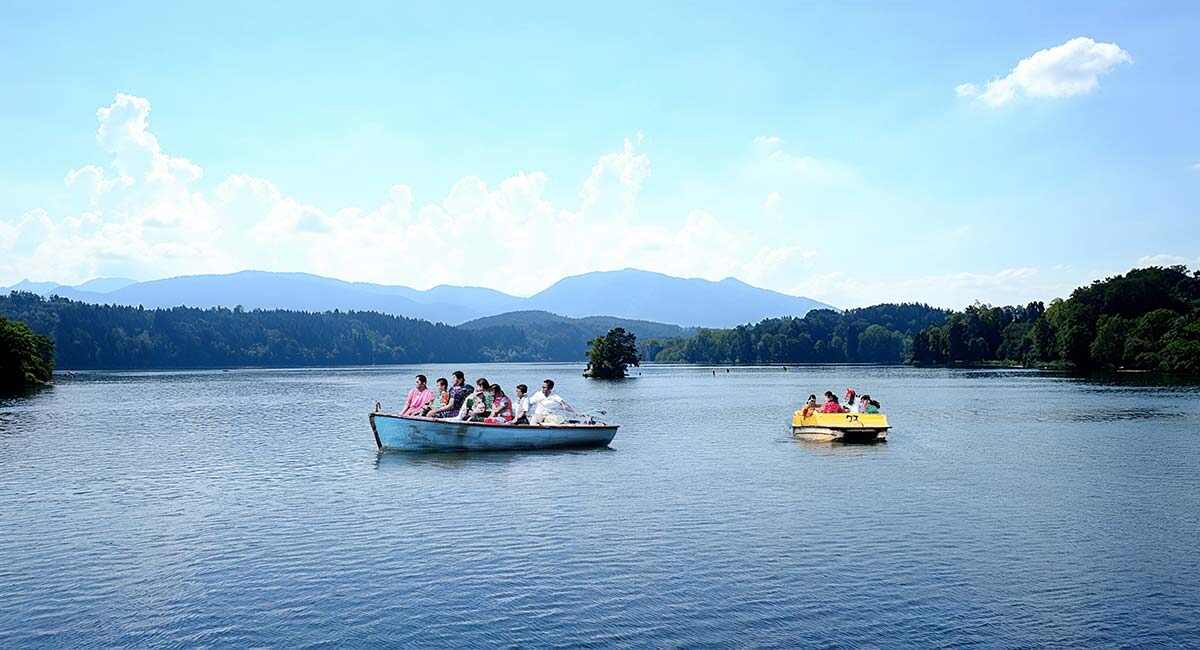Kanjia Lake, Odisha
Within the bustling capital of Odisha, Bhubaneswar, lies a tranquil and ecologically significant water body — Kanjia Lake. Often overshadowed by the state’s more famous attractions, such as Chilika Lake and the temples of Puri and Konark, Kanjia Lake remains a spectacular spot for nature lovers, birdwatchers, researchers, and everyday tourists seeking serenity and a glimpse of biodiversity. Spanning an area of around 66 hectares, the lake is a vital part of the Nandankanan Zoological Park and plays a crucial role in the region’s ecological and hydrological landscape.
A Natural Wonder in an Urban Setting
What makes Kanjia Lake unique is its harmonious coexistence with Bhubaneswar’s rapidly growing urban sprawl. Located adjacent to the Nandankanan Zoo and Botanical Garden, this freshwater lake is both a recreational hotspot and a conservation area. The lake, with its sprawling green surroundings, scenic viewpoints, and calm waters, is a welcome contrast to the city’s pace and is just a short drive from the center of Bhubaneswar.
Kanjia Lake was officially declared a wetland of national importance under the National Wetland Conservation Programme by the Government of India, which speaks volumes about its environmental significance. The lake’s unique aquatic ecology, which is fed by runoff and natural springs, is home to a diverse range of plants and animals.
Rich Biodiversity
Kanjia Lake is not just a body of water — it’s a living, breathing ecosystem. The lake is home to many freshwater fish, amphibians, and aquatic plants. Additionally, it is a popular location for bird-watching, particularly in winter when migratory species from around the world visit the lake. Bird enthusiasts have spotted species such as the Open-billed stork, Pond heron, Kingfisher, Cormorant, and Purple moorhen, among others.
Numerous aquatic and semi-aquatic plant species can be found in the lake and its surroundings, aiding in water filtration and serving as food and habitat for diverse species.
The lake is also home to reptiles such as turtles and water snakes, and supports a complex food chain that includes insects, frogs, small fish, and larger predators like birds and monitor lizards. Due to its proximity to the Nandankanan Zoo, the area has additional green spaces, which further support biodiversity.
Recreational and Educational Value
Kanjia Lake is a site for ecological conservation and a favorite spot for boating and picnicking. The Nandankanan Zoological Park offers boating services that allow visitors to paddle or ride in mechanized boats across the lake. This activity provides a peaceful and scenic experience while educating people about wetland ecosystems.
The lake also serves an educational purpose. Schoolchildren, college students, and researchers from nearby institutions often visit it to study aquatic biology, environmental science, and conservation strategies. Workshops and awareness programs are usually organized in collaboration with the Nandankanan authorities to promote sustainable practices.
Conservation Challenges and Efforts
Like many natural bodies in urban areas, Kanjia Lake has faced its share of environmental threats. Encroachment, pollution from urban runoff, and increasing visitors have affected its ecological balance. Siltation and eutrophication are other pressing issues threatening the lake’s long-term health.
However, steps have been taken in recent years to rejuvenate the lake. Authorities have rolled out initiatives such as desilting operations, waste management drives, and eco-tourism planning. With an emphasis on sustainability, the Nandankanan Zoological Park and the Odisha Forest and Environment Department continue to monitor and manage the lake’s health.
Local NGOs and citizen groups have also started participating in cleanup drives and awareness campaigns, demonstrating how community engagement can help preserve the environment.
Cultural and Social Significance
Local communities not only recognize Kanjia Lake for its ecological importance but also value it for its cultural significance. It is an integral part of the collective memory and identity of the people of Bhubaneswar. Locals gather near the lake for rituals and celebrations during specific festivals, blending nature with tradition.
Additionally, the lake and its scenic environment have become a go-to spot for morning walkers, joggers, yoga practitioners, and photographers, making it a socially active zone in the early hours of the day.
Best Time to Visit
The winter months, from November to February, are the best time to visit Kanjia Lake, thanks to its excellent weather and the presence of migratory birds. “Early mornings especially enchant visitors, as mist rises off the water and bird calls echo through the air. The monsoon season also showcases stunning beauty, with lush greenery and a large lake, although authorities may restrict boating due to heavy rains.
Getting There
Kanjia Lake is about 10–12 kilometers from Bhubaneswar Railway Station and easily accessible by car, taxi, or public transport. Both domestic and foreign travelers will find it convenient as the Biju Patnaik International Airport is only about 15 kilometers away.
Once in Bhubaneswar, follow the signs to Nandankanan Zoological Park near the lake. The zoo includes access to the lake area in its entry fee, and staff charge a separate fee for boating.
Final Thoughts
Kanjia Lake is a testament to the fact that nature can survive and thrive even amid rapid urban development, provided we nurture and respect it. A visit to this beautiful lake offers relaxation and leisure and deepens one’s appreciation for biodiversity and the urgent need for conservation.
Whether you are a birdwatcher, a photography enthusiast, a student of the environment, or someone simply looking for peace in nature’s lap, Kanjia Lake in Odisha promises a rewarding experience. As Bhubaneswar grows, preserving treasures like Kanjia Lake becomes more critical for nature, the city, and future generations.


